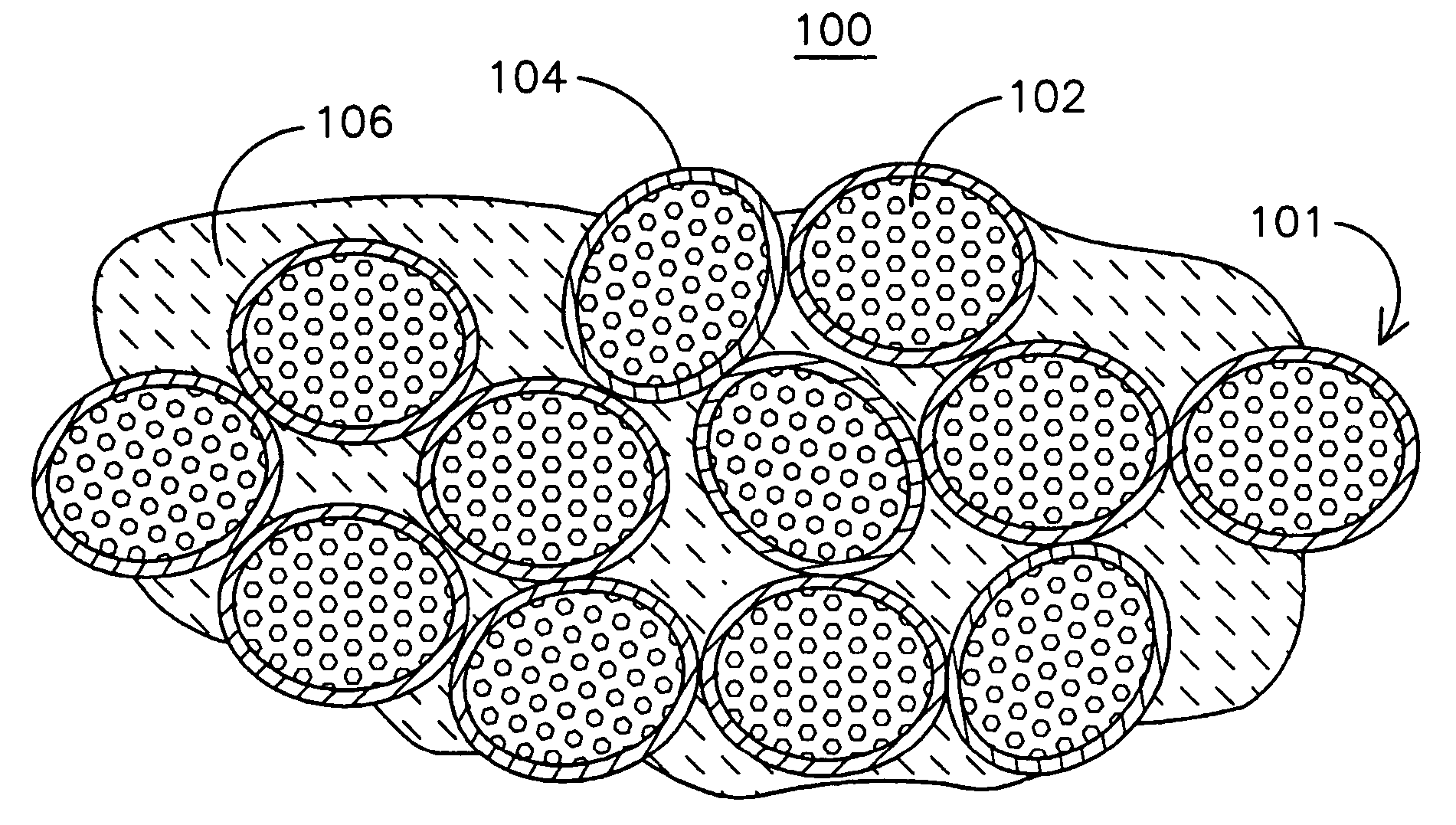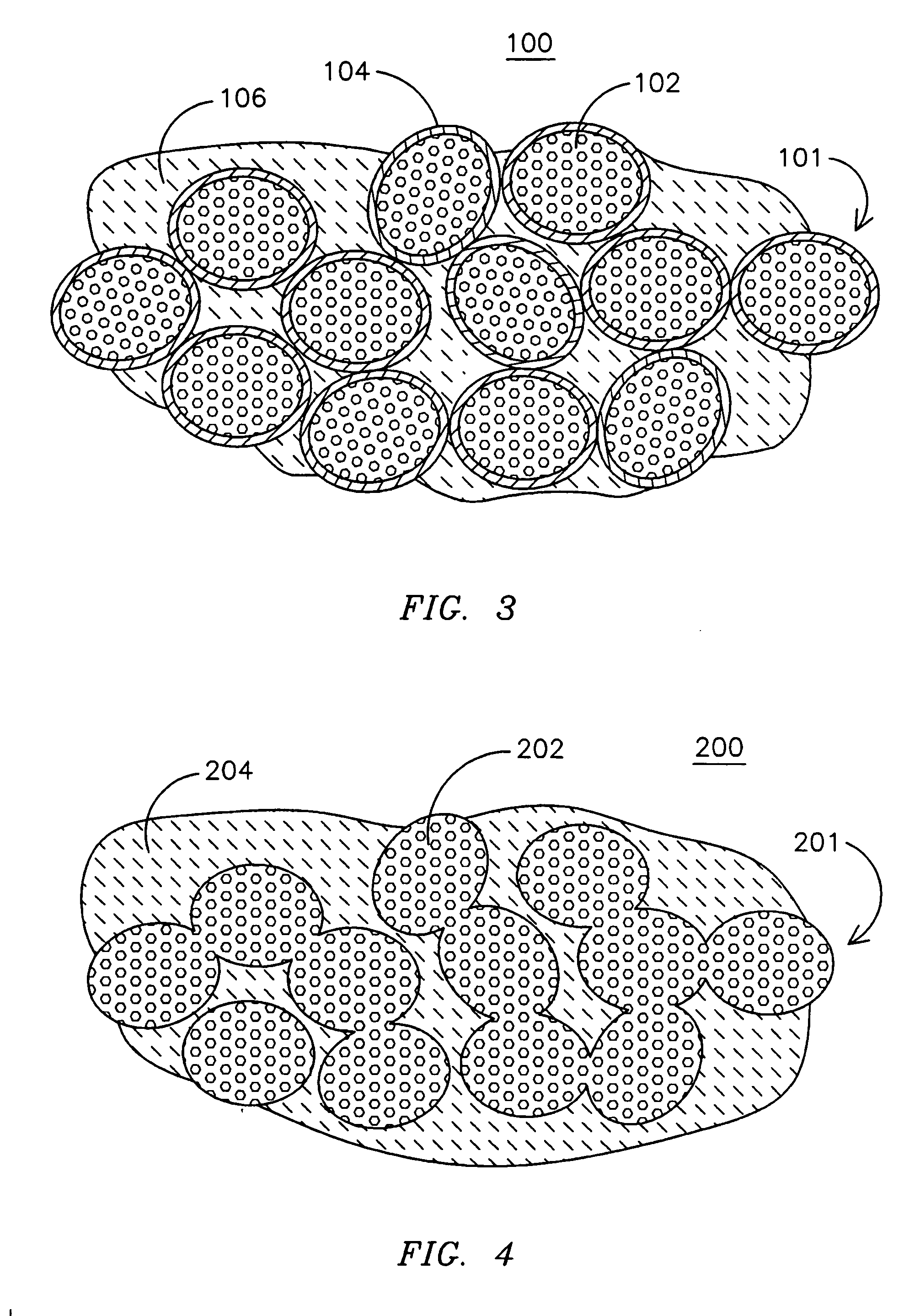Insulating ceramic based on partially filled shapes
a technology of insulating ceramics and partially filled shapes, applied in the field of high temperature ceramic insulating materials, can solve the problems of limited versatility, limited thickness that can be used, and thickness limitation of approximately 0.5 mm
- Summary
- Abstract
- Description
- Claims
- Application Information
AI Technical Summary
Benefits of technology
Problems solved by technology
Method used
Image
Examples
Embodiment Construction
[0009] Aspects of the present invention provide a composition that uses a high temperature ceramic material as an insulator over a higher strength, lower temperature substrate for application in high temperature environments. As described in U.S. Pat. No. 6,197,424, herein incorporated by reference in its entirety, the assignee of the present invention has developed an innovative ceramic insulation useful for the thermal protection of, for example, oxide-oxide ceramics and ceramic matrix composites. This insulation essentially comprises structures in which random “close-packed” arrays of integral solid walled hollow spheres may be contained within a relatively less stable, but process-compatible matrix.
[0010] The reliance of this ceramic on integral solid walled hollow spheres, although quite effective for its intended purposes, may give rise to some processing and performance characteristics that may not necessarily be optimal for every possible application. Firstly, this structur...
PUM
| Property | Measurement | Unit |
|---|---|---|
| Fraction | aaaaa | aaaaa |
| Fraction | aaaaa | aaaaa |
| Fraction | aaaaa | aaaaa |
Abstract
Description
Claims
Application Information
 Login to View More
Login to View More - R&D
- Intellectual Property
- Life Sciences
- Materials
- Tech Scout
- Unparalleled Data Quality
- Higher Quality Content
- 60% Fewer Hallucinations
Browse by: Latest US Patents, China's latest patents, Technical Efficacy Thesaurus, Application Domain, Technology Topic, Popular Technical Reports.
© 2025 PatSnap. All rights reserved.Legal|Privacy policy|Modern Slavery Act Transparency Statement|Sitemap|About US| Contact US: help@patsnap.com



